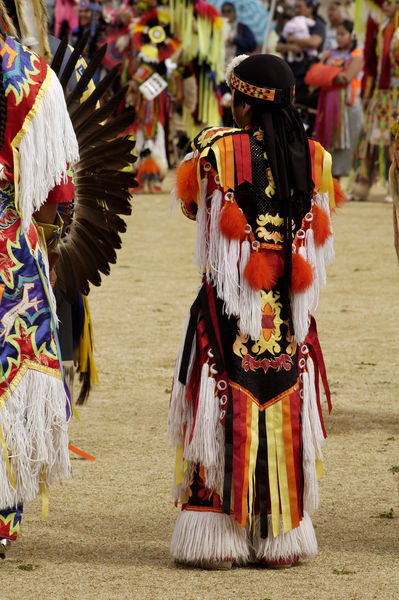Treaties - Treaties and native americans

One purpose of the new Constitution was to organize an effective army to deal with issues surrounding the "western lands." The western lands, were, of course, occupied by Native Americans. The history of U.S. relations with Native Americans during the nineteenth century is long and complicated because of the number of different Native American peoples involved, but fundamentally simple in terms of the process that was repeated hundreds of times across the continent. The U.S. government deployed military garrisons on the edge of Indian (Native American) territories, and when conflict arose, as it invariably did, the army reacted by invading the Indian nations and attacking the Native Americans.
At the time of the American Revolution, however, Americans viewed the Indians as distinct peoples, and they viewed their nations as distinct nations, even if other countries did not. Both the Articles of Confederation and the Constitution of the United States reflected this reality. One of the first acts of the Continental Congress was the creation in 1775 of three departments of Indian affairs: northern, central, and southern. Among the first departmental commissioners were Benjamin Franklin and Patrick Henry. Their job was to negotiate treaties with Indian nations and obtain their neutrality in the coming revolutionary war. Among the first treaties presented to the Senate by George Washington—in August 1789—dealt with U.S. relations with various Native American tribes.
While the many accords reached with the Native Americans were sometimes called treaties, in reality the treaties were fictions. On 9 July 1821, Congress gave the president authority to appoint a commissioner of Indian affairs to serve under the secretary of war and have "the direction and management of all Indian affairs, and all matters arising out of Indian relations." From 1824, Native Americans were subject to the jurisdiction of the Bureau of Indian Affairs, newly established as a division of the War Department. After 1849 they were subject to the Home Department (later the Department of the Interior), which, within a century, controlled virtually every aspect of Indian existence.
International law in the nineteenth century did not consider as true treaties accords concluded with indigenous tribes that were not constituted in the form of genuine states. In 1831 the Supreme Court under Chief Justice John Marshall in Cherokee Nation v. Georgia ruled that Indian nations were not foreign nations but "domestic dependent nations," although the following year in Worcester v. Georgia, in a ruling that was defied by President Andrew Jackson and ignored by Congress, he ruled that they were capable of making treaties that under the Constitution were the supreme law of the land.
Between 1789 and 1871 the president was empowered by the Senate to make treaties with the Native American tribes or nations in the United States. These treaties ostensibly recognized the sovereignty of Native Americans. Many of the very early Native American treaties were ones of peace and friendship, and a few included mutual assistance pacts, or pacts to prevent other tribes from making hostile attacks. The majority of Native American treaties, however, dealt with trade and commerce, and involved Indians ceding land. Native title was effectively extinguished by treaties of evacuation and removal of the Native American population. Most were signed under coercion. During the two terms of the presidency of Andrew Jackson (1828–1836), when removal of Native Americans from their lands reached almost a frenzy, ninety-four Indian treaties were concluded under coercion. Interestingly, one feature that all Native American treaties share with foreign treaties is that the courts will not inquire into the validity of the signatories. Just as a court will not inquire into whether a foreign dignitary was bribed or forced into signing a treaty, the courts will not inquire into whether a Native American tribe was properly represented during negotiation of a ratified treaty or whether such a treaty was acquired by fraud or under duress.
The president's authority to make treaties with Native Americans was terminated by the Indian Appropriations Act of 3 March 1871, which declared that no Indian tribe or nation would be recognized as an independent power with whom the United States could contract by treaty. However, this statute did not alter or abrogate the terms of treaties that had already been made. Native American treaties are still enforced today and continue to constitute a major federal source of Native American law.
In later years, Congress made provisions to permit Native Americans to recover monetary damages for treaty violations by the federal government. Prior to 1946 Congress enacted numerous special statutes permitting tribes to recover damages through the court of claims, and in 1946 Congress established the Native American Claims Commission to settle claims.
Comment about this article, ask questions, or add new information about this topic: